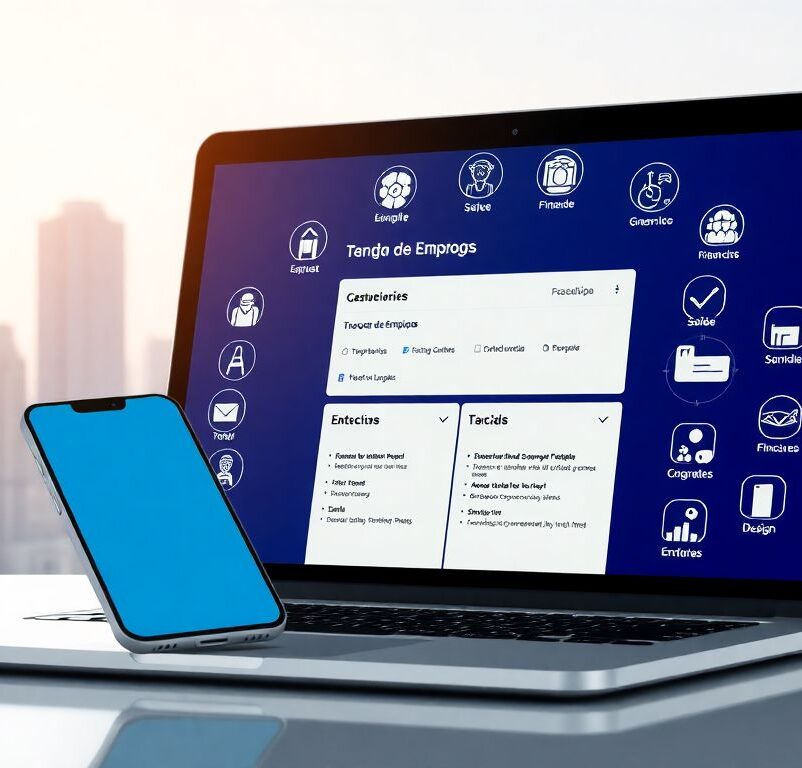Anúncios
In today’s competitive job market, comprehending the intricacies of job descriptions is crucial for both job seekers and employers.
Job descriptions serve as a bridge between the needs of an organization and the skills of potential candidates.
This article delves into what employers truly seek when crafting these descriptions and how understanding these elements can enhance the effectiveness of your job applications.
The anatomy of a job description
1. Job title and role clarity
The job title is the first element job seekers encounter. It must be clear, precise, and reflective of the role’s duties.
For instance, titles like “Senior Marketing Manager” or “Software Development Engineer” immediately convey the position’s seniority and function.
Employers often use specific titles to attract candidates with the right level of experience and expertise.
2. Essential responsibilities
Responsibilities outline the core duties associated with the work. This section should detail what the employee will be expected to perform daily.
Common phrases like “manage a team,” “develop marketing strategies,” or “conduct data analysis” highlight the tasks associated with the role.
Anúncios
Employers list these to ensure candidates understand the scope and expectations of the job.
3. Required qualifications and skills
Qualifications and skills are pivotal in work descriptions. This section usually includes educational requirements, certifications, and specific skills.
Employers often list qualifications like a bachelor’s degree in a related field, specific certifications (e.g., CPA for accountants), or technical skills such as proficiency in software tools (e.g., CRM systems or programming languages).
4. Experience requirements
The experience section specifies the number of years or type of experience required for the position.
Employers indicate this to ensure candidates possess the practical knowledge needed for the role.
Phrases like “5+ years of experience in project management” or “proven track record in sales” are common and provide insight into the expected level of expertise.
5. Company culture and values
Company culture and values give candidates a glimpse into the work environment and organizational ethos.
Descriptions often include information about the company’s mission, values, and service culture.
This section helps potential employees gauge whether they align with the company’s values and work style.
6. Salary and benefits
While not always included, salary and benefits are increasingly becoming part of work descriptions.
Transparency about compensation, health benefits, retirement plans, and other perks can attract a higher caliber of candidates.
Employers may use this section to showcase their competitive advantage in the job market.
Decoding employer expectations


Understanding job requirements
Employers carefully craft work requirements to filter candidates who meet their needs.
They seek candidates who can immediately contribute to the company’s goals.
Understanding these requirements helps candidates tailor their resumes and cover letters to match the specific skills and experiences employers are seeking.
Tailoring your application
To stand out, tailor your application to align with the job description.
Highlight your experiences and skills that directly correspond with the listed requirements.
Use keywords from the job description to pass through Applicant Tracking Systems (ATS) and catch the recruiter’s eye.
For example, if a job description emphasizes “leadership skills,” ensure your resume showcases your relevant leadership experiences.
Researching the employer
Conduct thorough research on the company to understand its mission, vision, and work culture.
This research allows you to tailor your application and interview responses to demonstrate how your values and skills align with the company’s needs.
Knowledge about the company’s recent projects, industry standing, and leadership can also provide an edge in the application process.
Common pitfalls to avoid
1. Overlooking soft skills
Employers often value soft skills as much as technical skills.
Skills such as communication, problem-solving, and teamwork are crucial for many roles.
Ensure your application reflects both your technical expertise and your interpersonal skills.
2. Ignoring job description details
Pay close attention to every detail in the job description.
Overlooking specific requirements or qualifications can result in your application being dismissed.
For example, if a job description mentions “experience with Agile methodology,” make sure to highlight any relevant experience in your resume or cover letter.
3. Failing to showcase achievements
Rather than listing job duties, focus on your achievements and how you’ve contributed to past roles.
Quantify your accomplishments where possible, such as “increased sales by 20%” or “managed a team of 10.”
This approach provides concrete evidence of your capabilities and success in previous roles.
Understanding work descriptions from an employer’s perspective can significantly enhance your job application strategy.
By focusing on role clarity, required skills, and alignment with company values, you can craft applications that stand out in a competitive job market.
Tailoring your resume to meet the specific requirements of each job description and showcasing your relevant achievements will increase your chances of securing interviews and landing your desired role.



